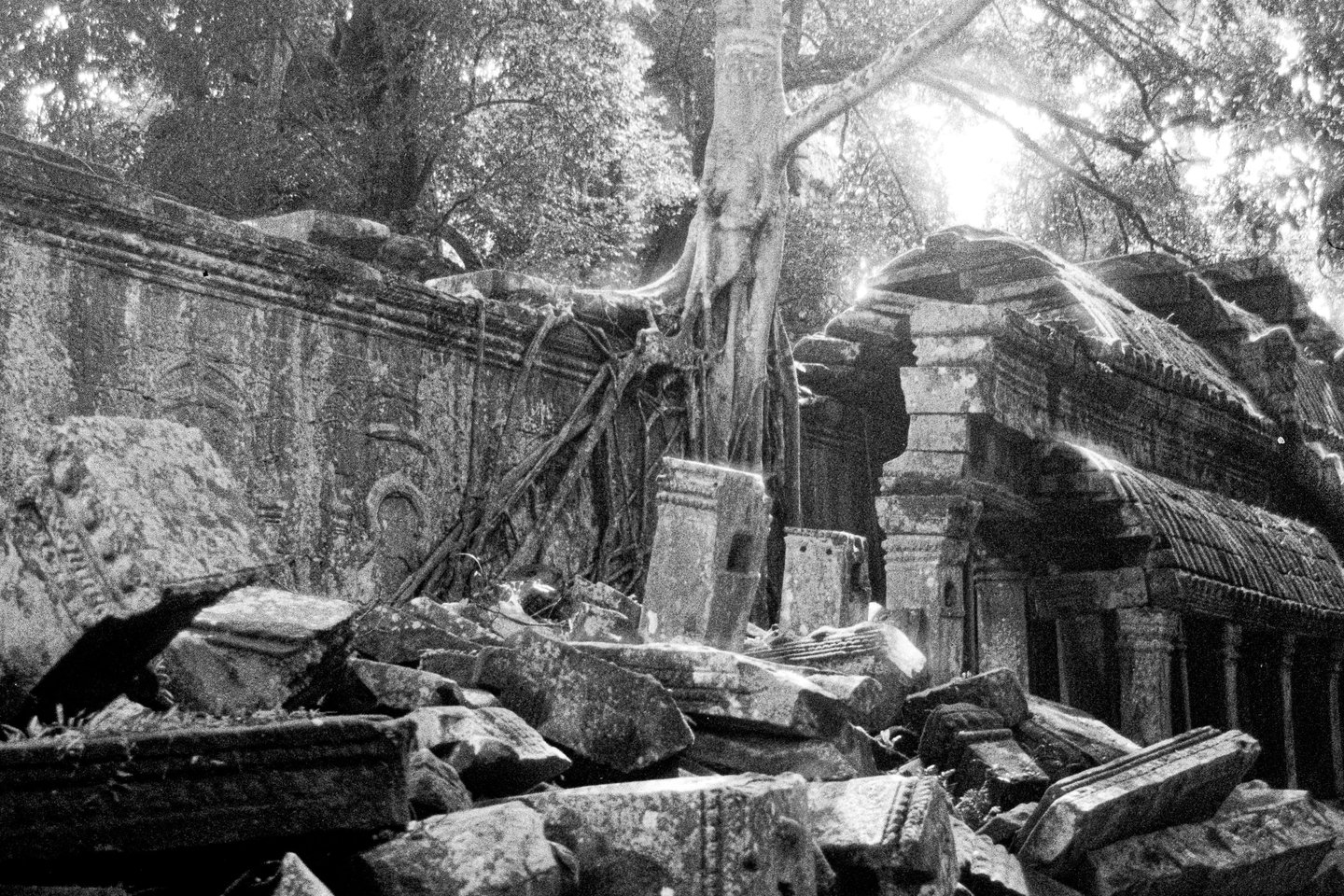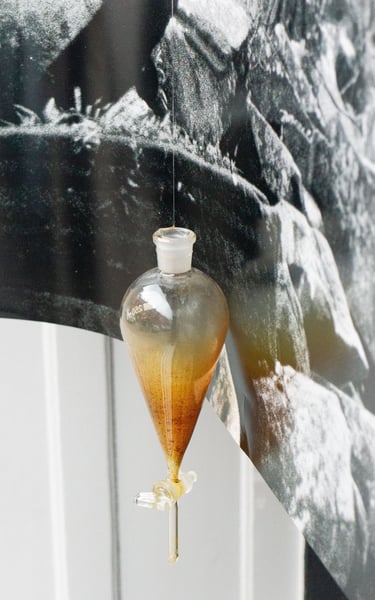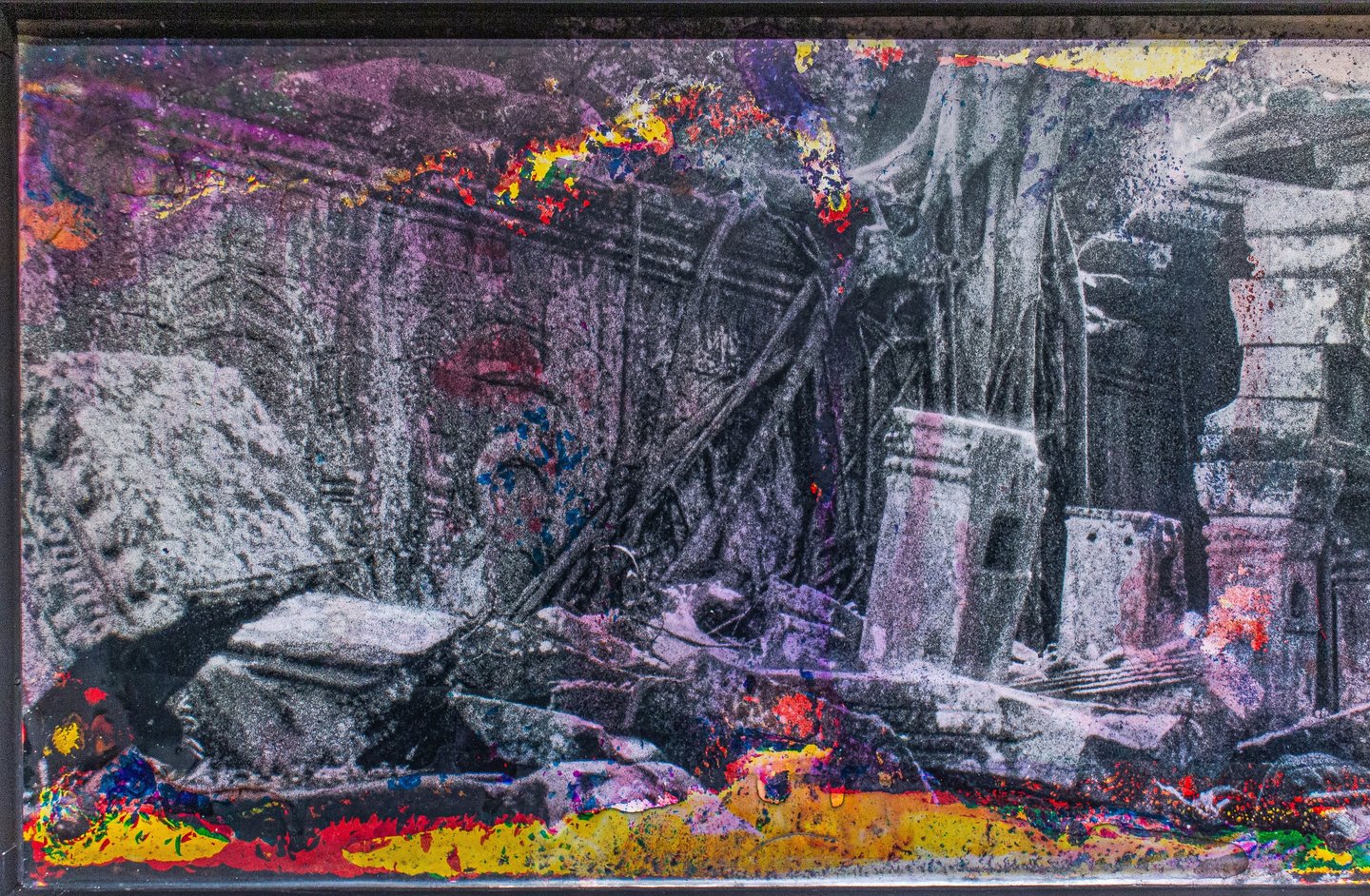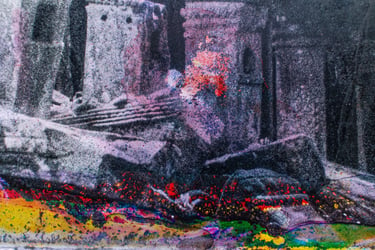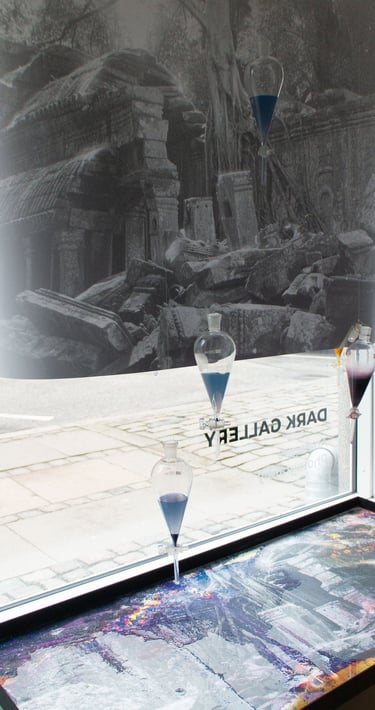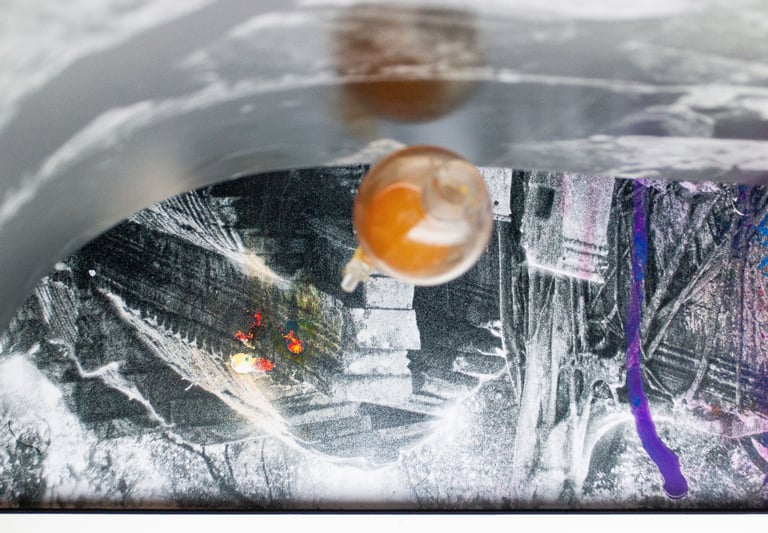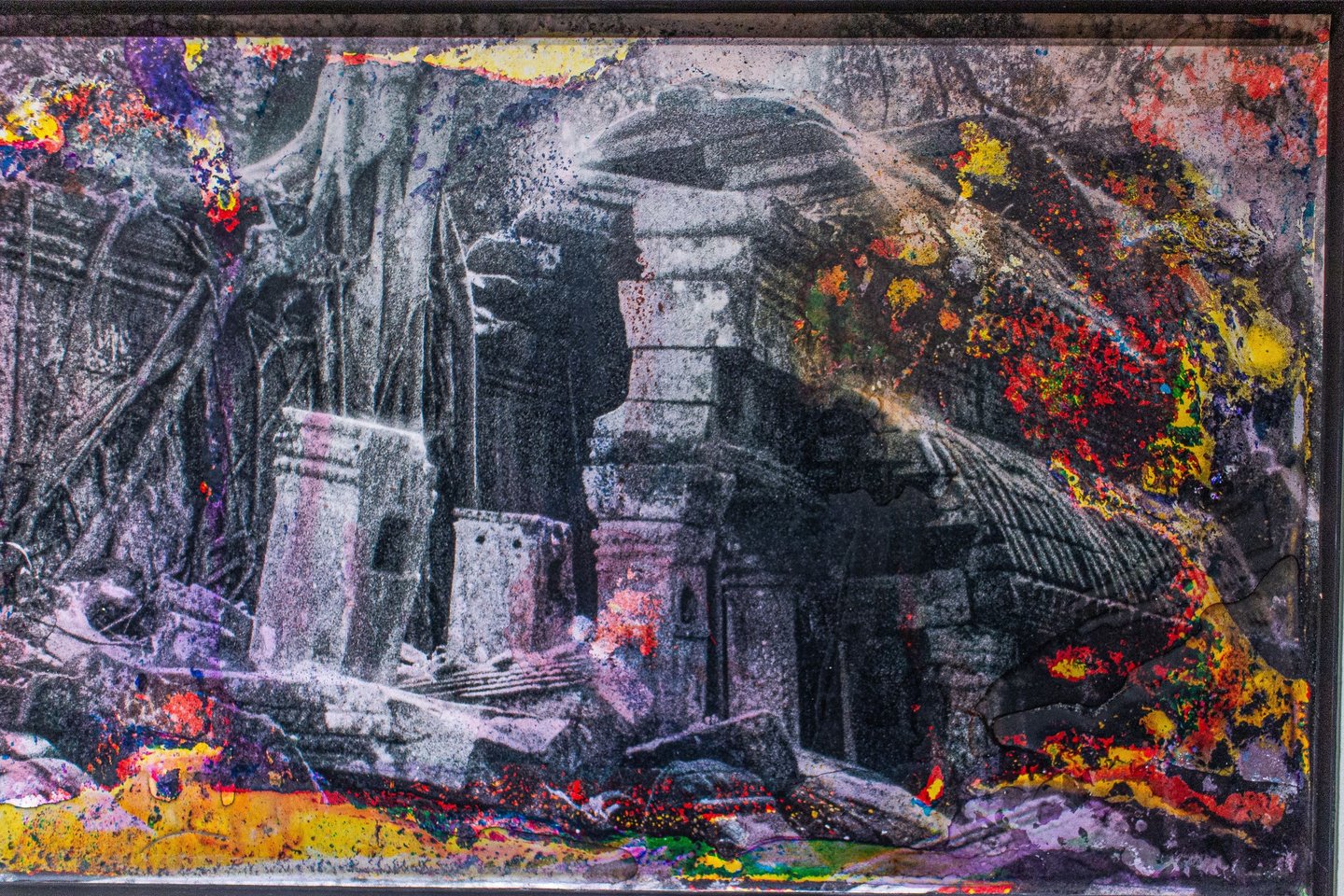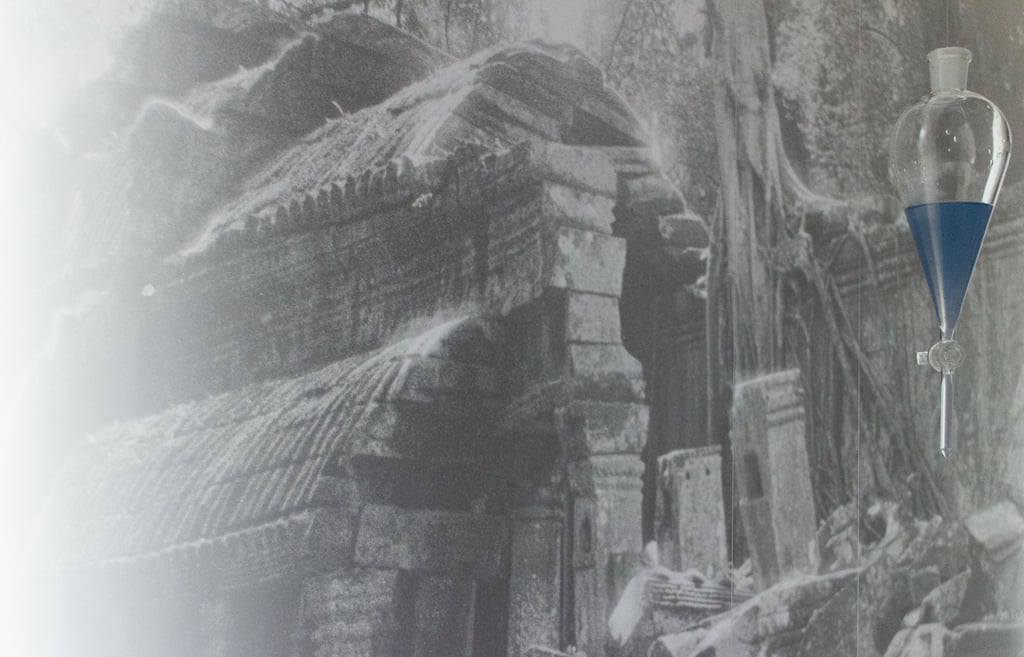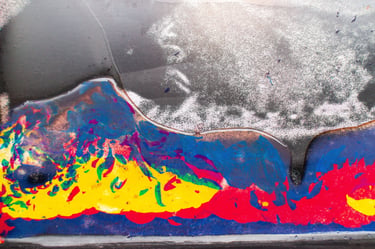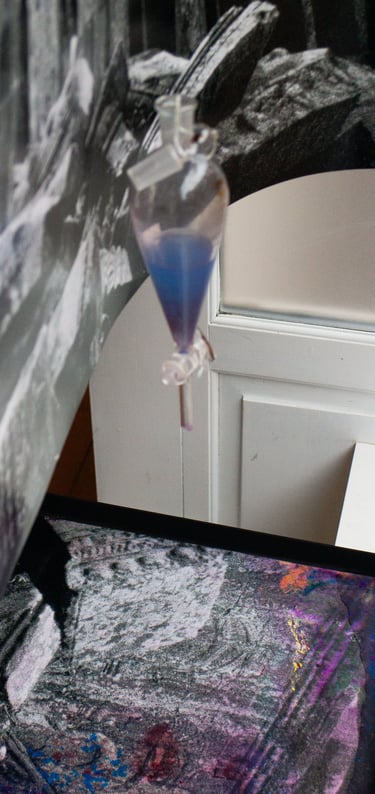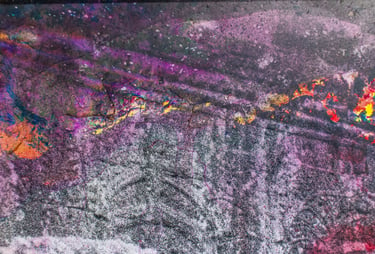The silver that kissed the sliver that persists (2025) is an exploration of silver photography undergoing constant chemical transformation, questioning the materiality of photography, memory, and ruins.
With this 1 month long installation, I continue exploring how to experience the passage of time within photographic matter, which means questioning our relationship to memory and the images that inhabit it.
The silver that kissed the sliver that persists (2025) acts as a temporal palimpsest, the image then establishes itself as what survives from a people of ghosts.
I constantly question the nature of the Image (what is an Image, where is the Image, when is an Image no longer an image?), and with this piece, I explore the duality between sacred and obsolete spaces, and how photography is/was sacred and obsolete to some degree.
The photograph is of a ruin site in Cambodia, near Angkor Wat, a hindu-budhist temple complex and the largest religious structure in the world, putting into play a material reconquest as a memorial quest.
Ruins are a key point of departure in my photographic practice.
A swan song of the image, I seek solace in the fact that the time for contemplation is limited.
I nurture the relationship between the act of seeing and the transformation of matter, and ruins evoke the question of collective memory and the passage of time.
By showing the material narrative of an image that changes before our eyes, displaying its capacity for metamorphosis and possible disappearance, I prompt the viewer to alter their way of seeing: forcing them to slow down and get closer to the object, tasting the bittersweetness I personally experience in the presence of ruins.
Who wandered through them? What did they look like at their peak? As a silent observer and spectator, how many stories remain latent within their walls?
